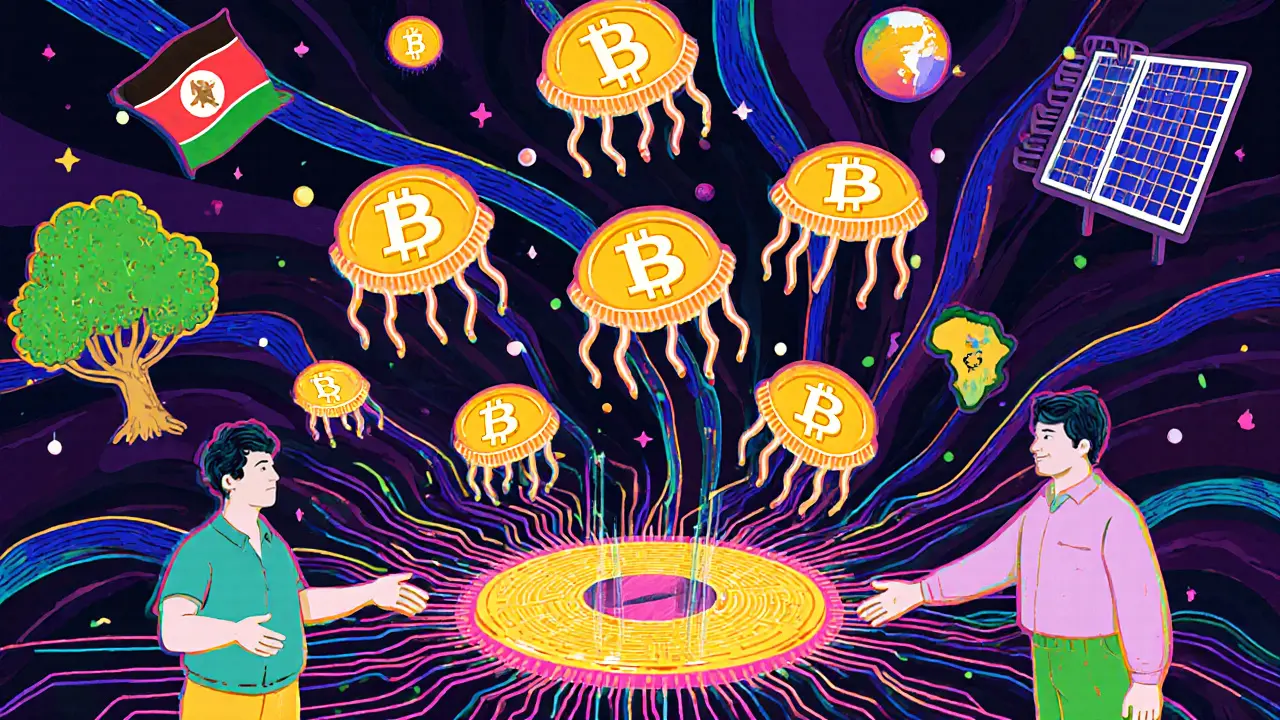KlimaDAO: What It Is, How It Works, and Why It Matters in 2025
When you hear KlimaDAO, a decentralized autonomous organization built to tokenize and stabilize carbon credits on blockchain. Also known as Klima, it’s not just another crypto project—it’s a financial tool designed to make carbon offsets more liquid, transparent, and accessible. Unlike traditional carbon markets where credits sit idle for years, KlimaDAO turns them into digital assets you can buy, stake, or trade—all while funding real-world emissions reduction.
At its core, KlimaDAO relies on carbon credits, certified units representing one metric ton of CO2 removed or avoided. Also known as carbon offsets, these are issued by verified projects like reforestation or renewable energy installations. KlimaDAO buys these credits in bulk, locks them into its treasury, and then issues its own token, KLIMA, backed by them. This means every KLIMA token has real environmental value behind it—not just speculation. The protocol uses a unique bonding mechanism to stabilize KLIMA’s price, encouraging users to hold instead of sell, which helps keep demand strong and credits permanently off the market.
What makes KlimaDAO stand out isn’t just the tech—it’s the mission. Most crypto projects chase price pumps. KlimaDAO wants to make carbon credits more valuable than cash. It’s not about getting rich quick; it’s about building a system where doing good also pays. And it’s working: as of 2025, KlimaDAO’s treasury holds over 1.5 million verified carbon credits, making it one of the largest single holders in the world. That’s not a drop in the ocean—it’s a wave.
But here’s the catch: KlimaDAO doesn’t work without active participants. You don’t just buy KLIMA and forget it. You need to stake it, earn rewards, and help lock more credits into the system. That’s how the protocol grows its impact. It’s not a passive investment—it’s a participation economy for climate action.
That’s why the posts below cover everything you need to know: how KlimaDAO connects to real-world asset tokenization, how it compares to other climate-focused crypto projects, and why some critics say it’s overhyped while others call it the most practical use of blockchain for the planet. You’ll find deep dives on tokenomics, staking mechanics, and how KlimaDAO fits into broader crypto regulations like MiCA and OFAC rules. Whether you’re looking to stake, study, or just understand if this is real or just another greenwash, the data’s here—no fluff, no hype, just what matters.
How Carbon Credit Trading on Blockchain Works in 2025
Carbon credit trading on blockchain turns verified emissions offsets into digital tokens, enabling transparent, instant, and fractional trading. Learn how it works, key platforms, and why quality matters more than tech.
